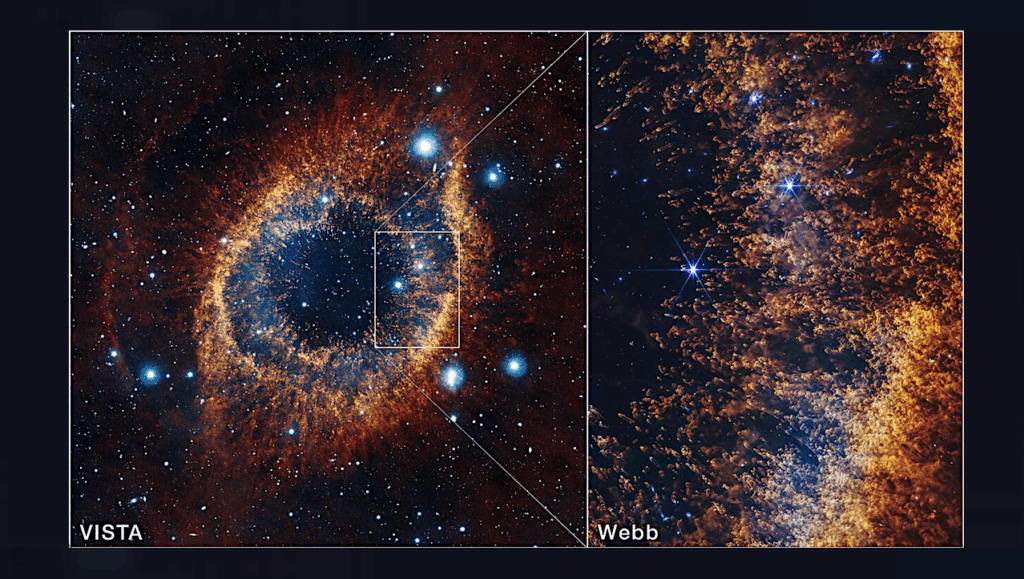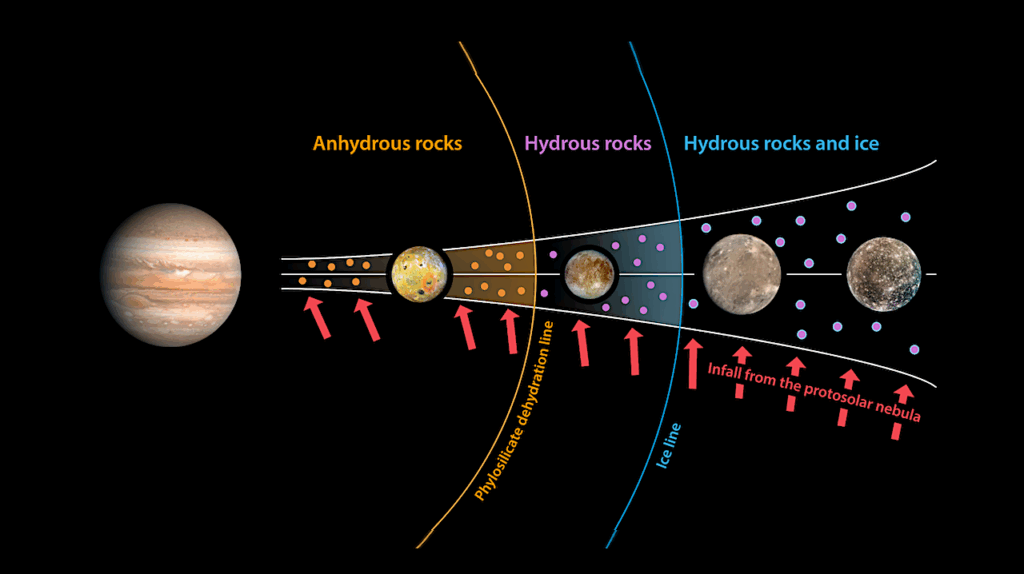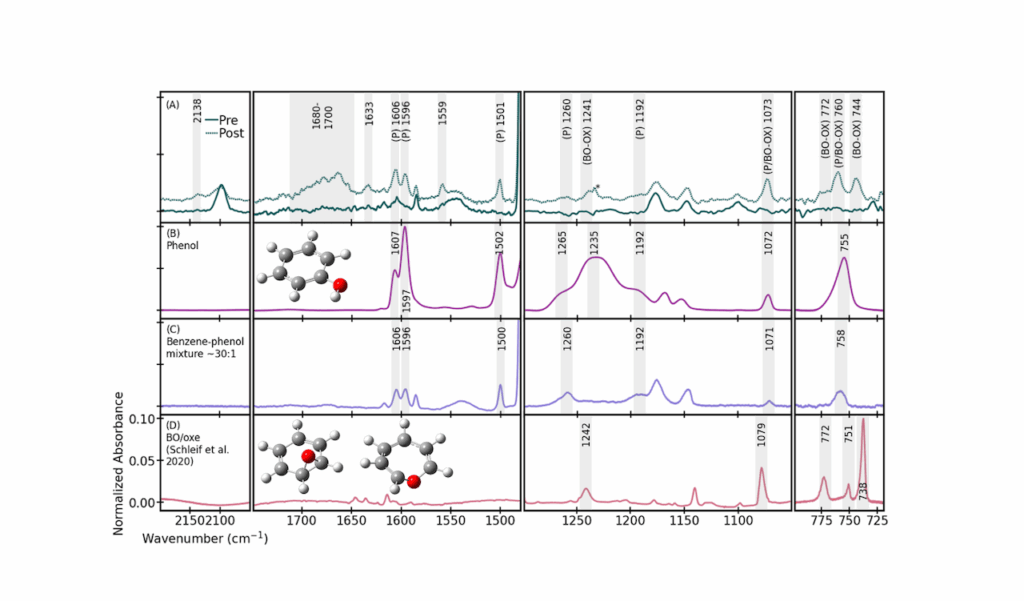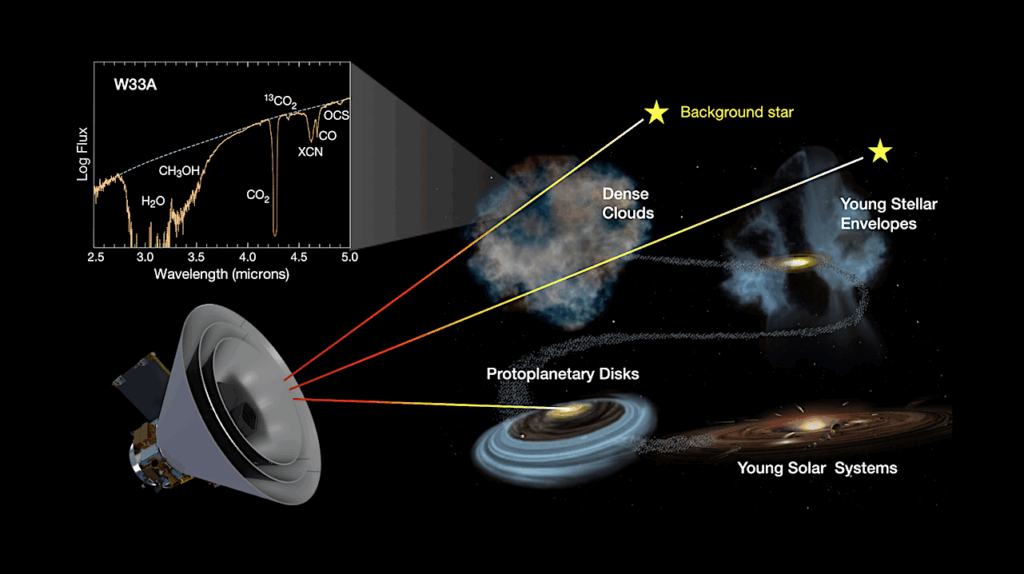The GUAPOS Project: G31.41+0.31 Unbiased ALMA Spectral Observational Survey. IV. Phosphorus-bearing Molecules And Their Relation With Shock Tracers
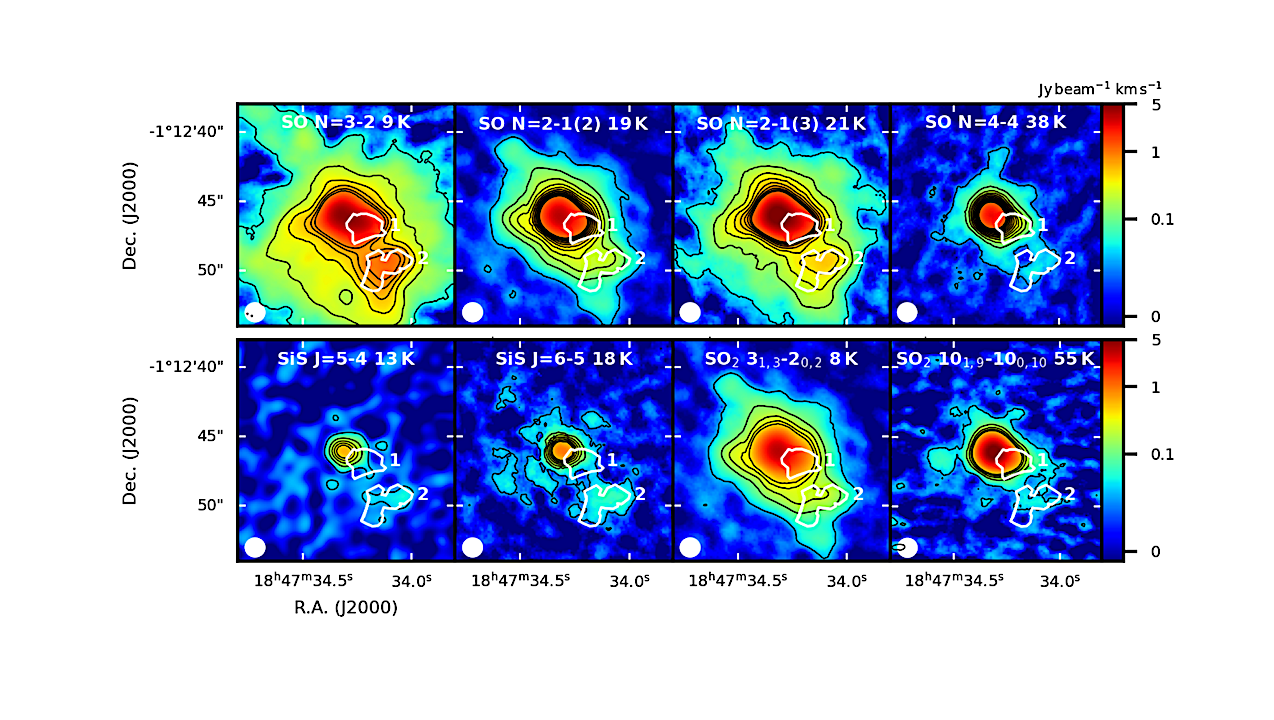
The astrochemistry of the important biogenic element phosphorus (P) is still poorly understood, but observational evidence indicates that P-bearing molecules are likely associated with shocks.
We study P-bearing molecules, as well as some shock tracers, towards one of the chemically richest hot molecular core, G31.41+0.31, in the framework of the project “G31.41+0.31 Unbiased ALMA sPectral Observational Survey” (GUAPOS), observed with the Atacama Large Millimeter Array (ALMA). We have observed the molecules PN, PO, SO, SO2, SiO, and SiS, through their rotational lines in the spectral range 84.05-115.91 GHz, covered by the GUAPOS project. PN is clearly detected while PO is tentatively detected.
The PN emission arises from two regions southwest of the hot core peak, “1” and “2”, and is undetected or tentatively detected towards the hot core peak. the PN and SiO lines are very similar both in spatial emission morphology and spectral shape. Region “1” is in part overlapping with the hot core and it is warmer than region “2”, which is well separated from the hot core and located along the outflows identified in previous studies.
The column density ratio SiO/PN remains constant in regions “1” and “2”, while SO/PN, SiS/PN, and SO2/PN decrease by about an order of magnitude from region “1” to region “2”, indicating that SiO and PN have a common origin even in regions with different physical conditions. Our study firmly confirms previous observational evidence that PN emission is tightly associated with SiO and it is likely a product of shock-chemistry, as the lack of a clear detection of PN towards the hot-core allows to rule out relevant formation pathways in hot gas. We propose the PN emitting region “2” as a new astrophysical laboratory for shock-chemistry studies
F. Fontani (1,2,3), C. Mininni (4), M.T. Beltrán (1), V.M. Rivilla (5), L. Colzi (5), I. Jiménez-Serra (5), Á. López-Gallifa (5), Á. Sánchez-Monge (6,7), S. Viti (8) ((1) INAF-Osservatorio Astrofisico di Arcetri, (2) Max-Planck-Institute for Extraterrestrial Physics (MPE), (3) LERMA, Observatoire de Paris, (4) INAF-Istituto di Astrofisica e Planetologia Spaziali, (5) Centro de Astrobiología (INTA-CSIC), (6) Institut de Ciéncies de l Espai (ICE, CSIC), (7) Institut de Estudis Espacials de Catalunya (IEEC), (8) Leiden Observatory)
Comments: 15 pages, 11 figures, accepted for publication in A&A
Subjects: Astrophysics of Galaxies (astro-ph.GA); Solar and Stellar Astrophysics (astro-ph.SR)
Cite as: arXiv:2311.13367 [astro-ph.GA] (or arXiv:2311.13367v1 [astro-ph.GA] for this version)
Submission history
From: Francesco Fontani
[v1] Wed, 22 Nov 2023 13:06:47 UTC (1,370 KB)
https://arxiv.org/abs/2311.13367
Astrobiology, Astrochemistry


